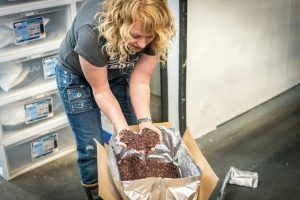Demystifying Fermentation: Simple Steps to Preserving Foods
Have you ever wanted to learn how to preserve your favorite foods for longer periods of time? Look no further than fermentation, a simple and traditional preservation method that has been utilized by our ancestors for centuries. Although fermentation may seem intimidating and mysterious, it is actually a straightforward and cost-effective way to prolong the shelf life of your favorite foods. In this article, we will demystify the process of fermentation and guide you through the simple steps of preserving foods through this age-old technique. So grab your mason jars and let’s get started!
The Basics of Fermentation
Before we dive into the steps of fermentation, let’s first understand what it is. Fermentation is a natural process in which microorganisms, such as bacteria and yeast, break down carbohydrates in food. This process produces lactic acid, which acts as a natural preservative and gives fermented foods their tangy flavor. Essentially, fermentation creates an environment where beneficial bacteria thrive, while harmful bacteria cannot survive, making it a safe and effective method of food preservation.
Health Benefits of Fermented Foods
In addition to preserving food, fermentation also offers numerous health benefits. Fermented foods are rich in probiotics, which are live microorganisms that support a healthy balance of bacteria in our gut. They also contain a variety of B vitamins and other nutrients that our bodies need to function properly, making fermented foods a great addition to a healthy diet.
The Simple Steps of Fermentation
Step 1: Choose your Ingredients
Making fermented foods requires only a few simple ingredients which can easily be found in your local grocery store. The main ingredients are a type of fruit or vegetable, salt, and water. You can also add herbs and spices to enhance the flavor of your fermented food.
Step 2: Prepare your Equipment
To ensure a successful fermentation process, it is essential to properly clean and sterilize your equipment. You will need a large bowl, a sharp knife, a cutting board, and preferably, a mason jar with an airtight lid. Boil your mason jar and lid in hot water for a few minutes to sterilize them and let them dry completely.
Step 3: Chop and Salt your Ingredients
After washing and peeling your chosen fruit or vegetable, chop them into small pieces and place them in a clean bowl. Sprinkle salt over the pieces and mix well to ensure all the pieces are coated evenly. The salt will help draw out the natural juice of the ingredients, creating a brine. The amount of salt needed depends on the type of vegetable you choose, so make sure to do your research beforehand.
Step 4: Pack your Fermentation Jar
Once your ingredients are properly salted, pack them tightly into your mason jar, making sure to leave some space at the top. Use a wooden spoon or your fingers to press down the ingredients, releasing air bubbles and creating an even layer. Pour the brine over the ingredients, completely covering them and leaving about an inch of space at the top.
Step 5: Seal and Store the Jar
Place the lid on the jar and seal it tightly. Store the jar in a cool and dark place, such as a basement or a pantry, for the fermentation process to take place. It is important to keep the jar out of direct sunlight as it can affect the fermentation process. Make sure to check on your jar every few days to make sure there are no air bubbles or mold forming. If you see any, simply remove them and reseal the jar.
Step 6: Taste and Enjoy!
The fermentation process usually takes about 1-3 weeks, depending on the ingredients and your personal preference. Once it is done, give your fermented food a taste and if you are satisfied with the flavor, move the jar to the refrigerator to slow down the fermentation process. Your fermented food will last for several months in the fridge, giving you a delicious and healthy addition to your meals.
Final Thoughts
In conclusion, fermentation is a simple and cost-effective method of preserving food that offers numerous health benefits. By following these six simple steps, you can create your own delicious fermented foods at home. So why not give it a try and discover the wonderful world of fermentation?
Remember to experiment with different ingredients and flavors to find your favorite fermentation recipes. And most importantly, have fun and enjoy the tasty and nutritious results of your fermentation efforts!











